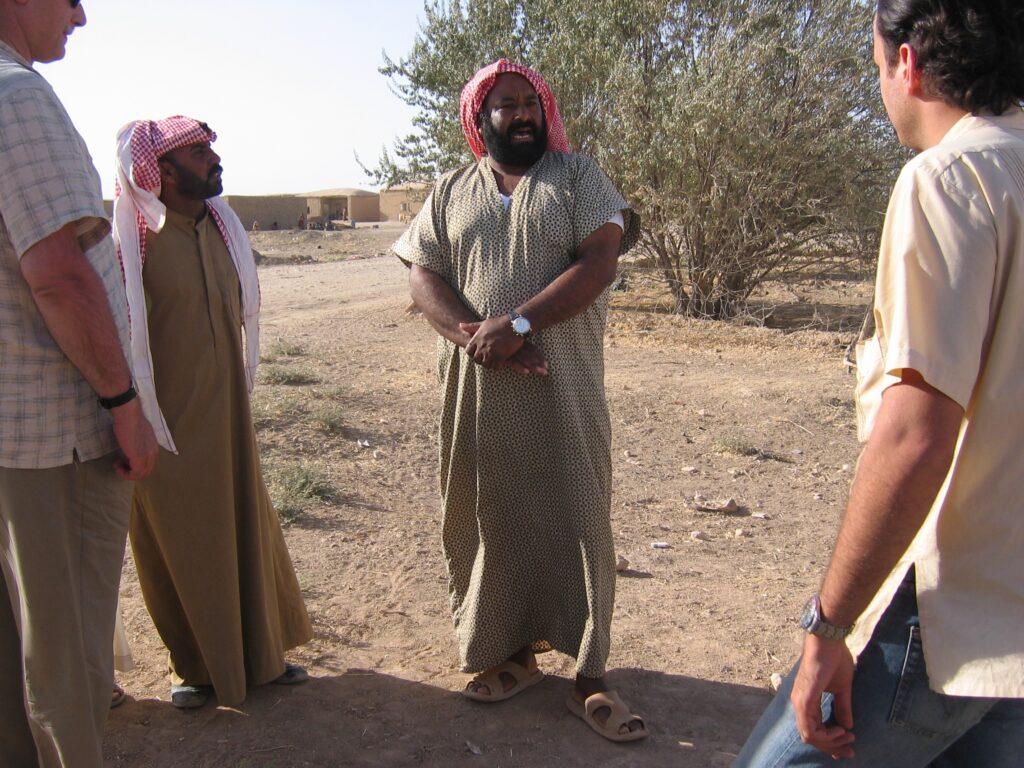A conversation with Dali al-Hkaysh in the Upper Jazirah in 2005

Dali was the brother of Radi al-Hkaysh and the paternal cousin of ‘Atallah al-Battu, who owned the Hamdani Simri stallion al-Aawar, and before him a Dahman ‘Amir of the horses of ‘Ajil al-Yawar. This Dahman ‘Amir had been given to him by his maternal uncles so he could earn a livelihood from charging stud fees. Both stallions were Shammar herdsires.
Radi, Dali and ‘Atallah are descendants of the former black slaves of the Jarba leaders of the Shammar. The reference to their maternal uncles is a euphemistic reference to their former masters, the family of Hmaidi al-‘Ajil al-Yawar al-Jarba of the leaders of the Shammar in Iraq. It means that they are related to the Shammar shaykhs in blood, but through concubines.
Dali had just returned from Damascus where he performed as a singer at wedding parties.
When did slavery stop in Syria?
I assume the French stopped it de jure in the 1920s. But it continued in practice until the 1980s. It takes a different form from slavery in the USA though. Slaves did not engage in hard labor. Rather, they guarded the shaykhs’ treasure box, they served as his bodyguards, coffee masters, and slave women were singers but also concubines.